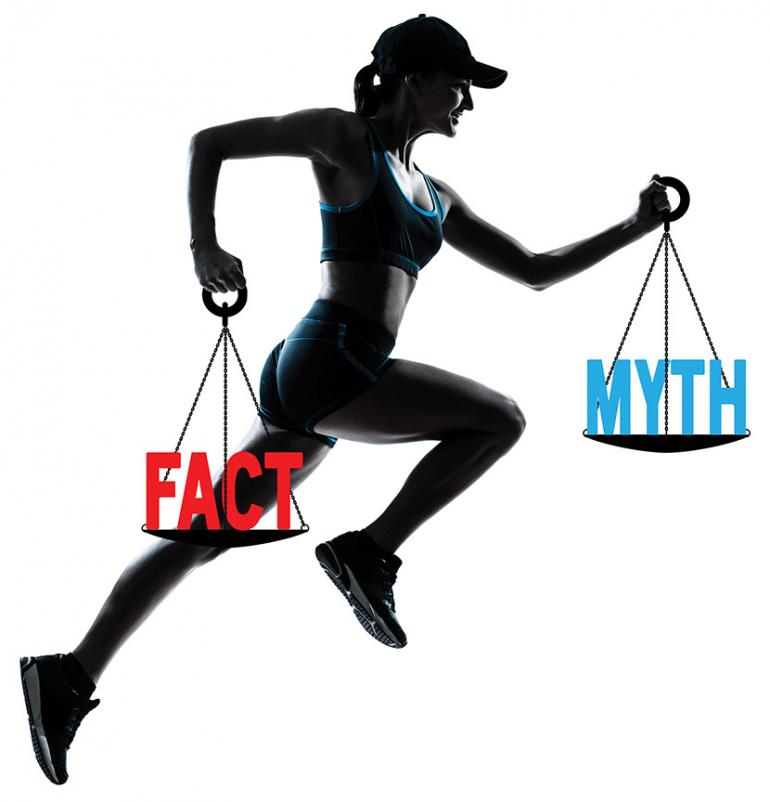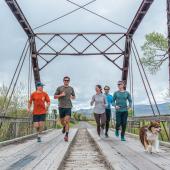Marathon des Fables
Popular running myths debunked.
It’s that time of year again, when we hang up our skis and dust off the running shoes for a mud-laden lap or two. When starting your spring training, avoid making some classic mistakes—and getting injured—due to myth and misinformation. This is Mythbusters, running edition.
Barefoot is best. It’s not. Barefoot running is like Tinder—for the majority of us, it’s not likely to lead to a long-term relationship. Running barefoot requires special strength and mechanics, not to mention a lengthy habituation period for the soles of the feet. For the lucky few with the right mechanics and thick skin, run on!
To run faster, I should lengthen my stride. Not true. An unnaturally long stride can increase ground-reaction force and lead to a stress fracture or patellofemoral pain. Unless you’re running from a bear, use your natural stride.
Running is the only exercise I need. Most runners, including myself, would love for this to be true. Unfortunately, it’s not. Adequate core-strength is a necessary element of any successful running program. A study in Medicine and Science in Sports and Exercise revealed that weakness in hip strength was predictive of lower-extremity injury, especially in female athletes. Ultimately, a solid core-strengthening program can help reduce the risk of injury while running, and make you healthier overall.
An injury is a good reason to buy new shoes. Not usually. In some cases, new shoes will help a runner recover from injury, especially when the old shoes have seen a lot of miles. However, most injuries, particularly in shoes with fewer than 300 miles on them, have origins related to technique, training, and mechanics. Training principles need to be addressed first and foremost.
Running will destroy my knees. False. According to an article published in Current Sports Medicine Reports, recreational running at a low to moderate level has not been associated with an increased risk of osteoarthritis. However, high-level or competitive running, a history of joint injury, increasing age, and a greater body-mass index (BMI) are associated with osteoarthritis. Also, performing any impact activity with poor mechanics, reduced strength, or reduced range of motion can lead to abnormal joint-loading, which may cause injury and joint degeneration.
Internet research is all I need to prevent running injuries. Don’t. Just don’t. See a professional. A physical therapist with experience treating runners and a background in running mechanics is a good place to start.
I can run faster than a bear. No, you can’t. Always carry bear spray or be able to out-sprint your running partner.
Happy trails!
Megan Peach is a physical therapist with Excel Physical Therapy in Bozeman.













